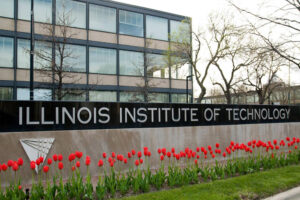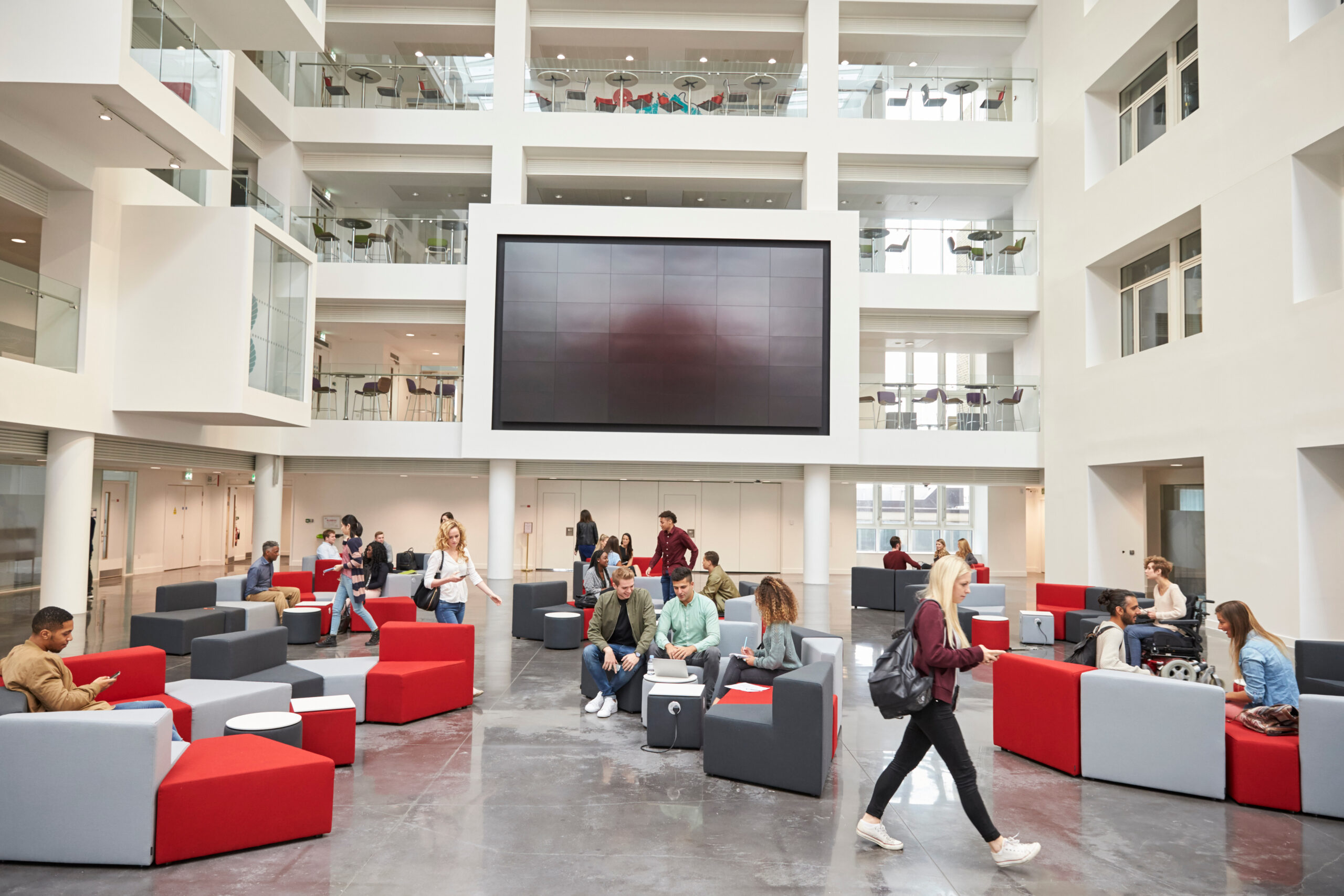As the global pandemic prompted higher education institutions to adapt to a new learning frontier, it shined a spotlight on virtual technologies and their ability to provide secure and engaging learning experiences anywhere, on any device, at any time.
The same technology that helped colleges and universities continue to deliver high-quality education to students during COVID-19 could now be the very solution that they need to overcome a new crisis facing higher education.
This blog will examine the various virtual technologies that facilitated remote learning during the pandemic and explore how the institutions that continue to embrace tech-forward teaching will be the ones to win the battle for new students this Fall.
The Technologies Virtualizing Education and Why They Remain So Popular
In a 2021 EDUCAUSE QuickPoll of university administrators, IT departments, and other staff, nearly 70 percent of respondents said they would like a remote option post-pandemic. This strongly echoes student sentiment regarding future learning preferences. In a 2021 Digital Learning Pulse survey, 73 percent of students polled “somewhat” or “strongly” agreed that they would like to take some fully online courses in the future. A slightly smaller number of students, 68 percent, indicated they would be interested in taking courses offering a combination of in-person and online instruction [1].
Why is there a desire to hold on to remote learning when it is no longer a necessary conduit for socially-distanced education? Technologies such as virtual computer labs, Zero Trust virtual desktops, and virtual cybersecurity labs enhance the learning process and help modernize instruction in today’s highly digitalized world.
Virtual computer labs (VCL) are instrumental in helping students learn, work with software programs, complete assignments, and interact with classmates and instructors. With virtual computer labs, instead of a student visiting a physical computer lab, a student can use any device connected to the internet to access a virtual version of that lab and leverage its respective software and resources.
The VCL is accessed via a web-browser interface and is platform independent. All operating systems, software, and applications are centrally maintained in the cloud, so end-users do not need to house or maintain any of the programs or software on their own machines; instead, they simply login to the cloud-based system to access everything they would use when visiting the brick-and-mortar campus computer lab.
Zero Trust virtual desktops are virtual desktops built around the core Zero Trust concept of “Trust no one and always verify.” Zero Trust is a relatively new security framework that ensures everyone both inside and outside of an organization is authorized before any interaction with network applications or data occurs. Zero Trust virtual desktops deliver data, apps, and tools securely in the browser via HTML, so there’s no need to worry about maintaining the security level of each endpoint device.
As with Zero Trust virtual desktops, students access virtual cybersecurity labs by logging in from any virtual device with an internet connection. End-users do not need to house or maintain any of the programs or software on their own machines; instead, they simply login to the cloud-based system.
With a scenario-based approach, cloud-based virtual cybersecurity labs provide the best training environment for teaching network security. Students encounter and work through real-life scenarios in cyber labs that reinforce the lessons learned in the classroom.
Although each virtual solution has particular benefits exclusive to them and their specific use cases, users of virtual computer labs, Zero Trust virtual desktops, and virtual cybersecurity labs often cite the following benefits:
- Flexible and equitable access. Virtual technologies enable students to complete their work at the student’s convenience. Students can engage in an active learning environment anytime, anywhere because they are no longer bound to a certain location or schedule. Furthermore, students don’t need high-end devices to access advanced resource-intensive applications and do not have to load it onto their personal devices. Once their device of choice is connected to the interne, each user will be provided exactly the same user experience.
- Collaborative Learning. Like their students, instructors are able to securely access campus applications virtually, giving them much more freedom as to when and where they can review assignments and answer questions. Students benefit from their teacher’s expanded access by receiving feedback and instruction in real-time or outside of traditional classroom hours. Instructors can offer help at various points, as well as track analytics like user participation.
- Top-notch equipment. Schools and students that use virtual technologies have access to cutting-edge technology without the hefty price tag. Companies that build and maintain these virtual technologies compete with each other to stay ahead of technology progression and that raises the quality of options for teachers and students. Students do not have to settle on outdated, yet expensive, equipment because a school cannot afford to replace it consistently.
- Lower costs. There is a fee associated with using virtual technologies but the capital and maintenance costs are drastically reduced. Customers pay a predictable low cost. Everything is already included; that means no implementation or consulting fees and no costly hardware replacements. This allows school to provide a better learning experience for students at a fraction of the cost.
- Less Pressure on IT: Third-party Desktop-as-a-Service (DaaS) providers provisioning the virtual technologies store and manage operating systems, software, applications, and data in cloud-based data centers around the world, allowing customers to free up both on-premises equipment and IT resources to focus on other mission-critical priorities.
Virtual Computer Labs: 2-year Impact Assessment Conducted by IIT

Winning the Enrollment Battle Through Technology
The decline in college enrollment is worsening. According to a report by the National Student Clearinghouse Research Center (NSCRC), the overall two-year decline in college enrollment has reached 7.4%, or nearly 1.3 million students since spring 2020 [2].
One way in which higher ed institutions can turn the tide on declining enrollment is to showcase their ability to support remote learning. Expanding the number of remote courses and programs available, and giving students the technology to support their virtual pursuits, will make schools more appealing to students who want to maintain the educational flexibility to which they have become accustomed during COVID.
According to an Ipsos survey for the World Economic Forum, 72 percent of respondents predict that hybrid learning models will be the norm by 2025 [3]. By enlisting remote-access teaching and learning tools like virtual computer labs, Zero Trust virtual desktops, and virtual cybersecurity labs, colleges and universities stay ahead of the curve and ensure that students receive hands-on educational experiences regardless of their physical locations.
The transition to online education is also enabling institutions to reach out to nontraditional students and students from underserved areas and under-represented communities. Nontraditional students (students identifying as any combination of: part-time, adult learners, returning/re-entry, commuter, veteran, online/distance learners, individuals who work full-time, who have dependents other than a spouse or partner, or students who do not have a high school diploma) make up almost 75% of the nearly 20 million students currently enrolled in post-secondary education [4]. Institutions can show that they can accommodate the educational needs of nontraditional students, by supporting a flexible learning ecosystem that gives students more options, allowing them to take courses while managing other responsibilities.
Additionally, the anytime anywhere access to critical academic resources afforded by virtual computer labs, Zero Trust virtual desktops, and virtual cybersecurity labs, opens the doors to digital spaces that may have otherwise remained closed. Because these technologies only require an internet-connected device and not expensive hardware or software, the student experience is equalized from a technological standpoint and every student’s success is supported. Someone with a $100 Acer Chromebook will have the same user experience as someone with a $2,800 M1 MacBook Pro [5].
Conclusion
To keep schools competitive, institutions must quickly adjust to students’ new expectations and use all available digital resources to improve the student journey. Learning institutions that offer virtual computer labs, Zero Trust virtual desktops, or virtual cybersecurity labs within a flexible learn-at-your-own-pace environment will not only maximize their student capacity, they will also open up a world of possibilities to nontraditional students and students from underserved areas and under-represented communities; providing a more rewarding and inclusive academic experience for everyone.
A trusted partner for higher education institutions since 2014, Apporto works with customers to understand their unique needs in order to reduce demands on IT departments, maximize productivity, and boost security architectures. Contact us today to learn how our virtual computer labs, Zero Trust virtual desktops, and virtual cybersecurity labs can enhance your students’ learning journey too.
References:
[1] McKenzie, L. (2021, April 27). Students Want Online Learning Options Post-Pandemic. https://www.insidehighered.com/news/2021/04/27/survey-reveals-positive-outlook-online-instruction-post-pandemic
[2] Nietzel, M. T. (2022, May 26). New Report: The College Enrollment Decline Worsened This Spring. https://www.forbes.com/sites/michaeltnietzel/2022/05/26/new-report-the-college-enrollment-decline-has-worsened-this-spring/?sh=463def7f24e0
[3] Morad, R. (2022, March 11). Universities Reimagine Teaching Labs for a Virtual Future. https://edtechmagazine.com/higher/article/2022/03/universities-reimagine-teaching-labs-virtual-future
[4] Gilbert, N. (2022, June 30) 19 Higher Education Trends for 2022/2023: Latest Forecasts To Watch Out For. https://financesonline.com/trends-in-higher-education/
[5] Beidas, S. and McHugh, L. (2022, March 27) The COVID-19 Pandemic and Retooling Application Delivery: The Transformation from Physical to Cloud-Based Infrastructure. SIGUCCS ’22 Virtual Event, New York, NY, USA. https://doi.org/10.1145/3501292.3511580


